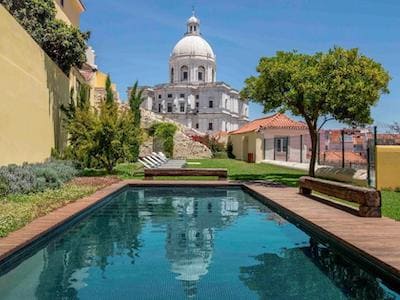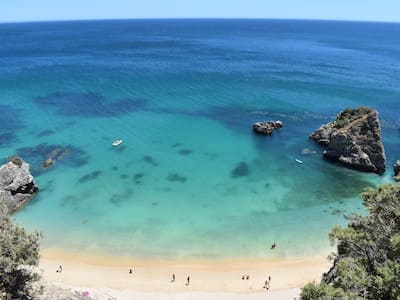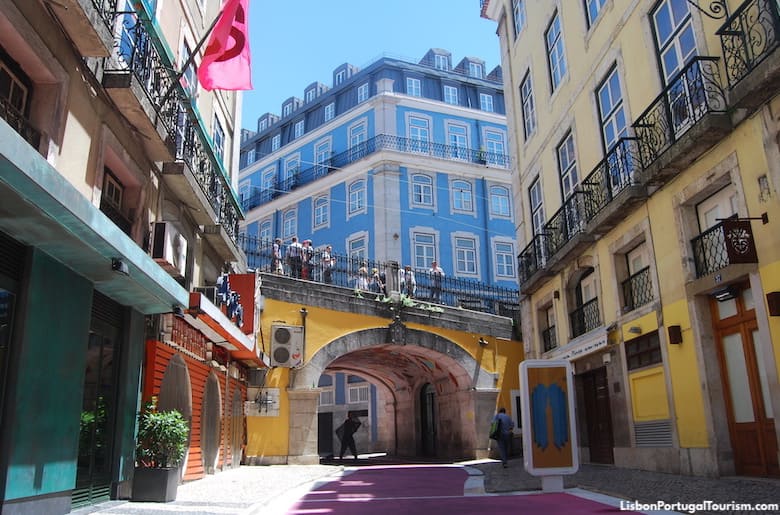
Rua Nova do Carvalho, aka "Pink Street"
Sodré is the name of a 15th-century family with businesses in this neighborhood, which has always been linked to the maritime trade. Over time, the entire area, from the waterfront to the two blocks north of it, became known as "Cais do Sodré," or “Sodré’s Wharf”
Today, it’s a terminal of the ferries that link Lisbon to Cacilhas across the river, and is also a train and metro station, as well as a major bus stop. Across the station is Praça Duque da Terceira, a square named after the Duke of Terceira, whose bronze statue stands at the center.
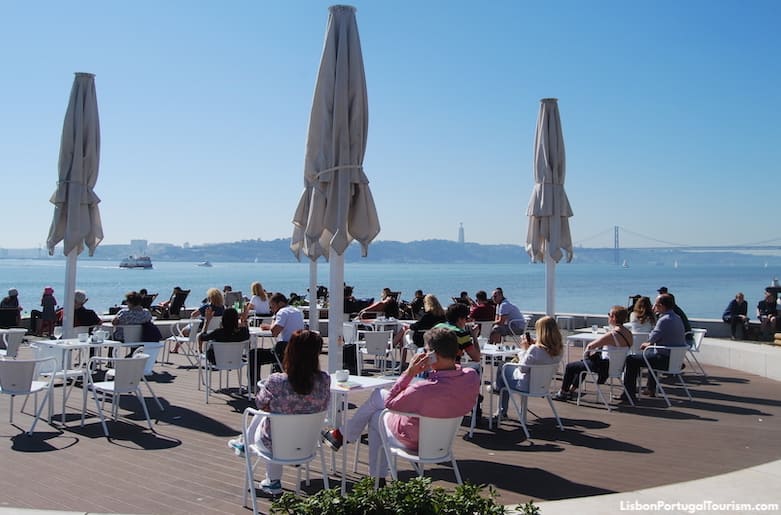
Terrace on the Ribeira das Naus promenade
To the west of the square is a large dome, under which stands the city's main food market, and next to it is another square, Praça Dom Luís. It's filled with palms and other trees, and is overlooked by a 19th-century statue of the Marquis of Sá da Bandeira.
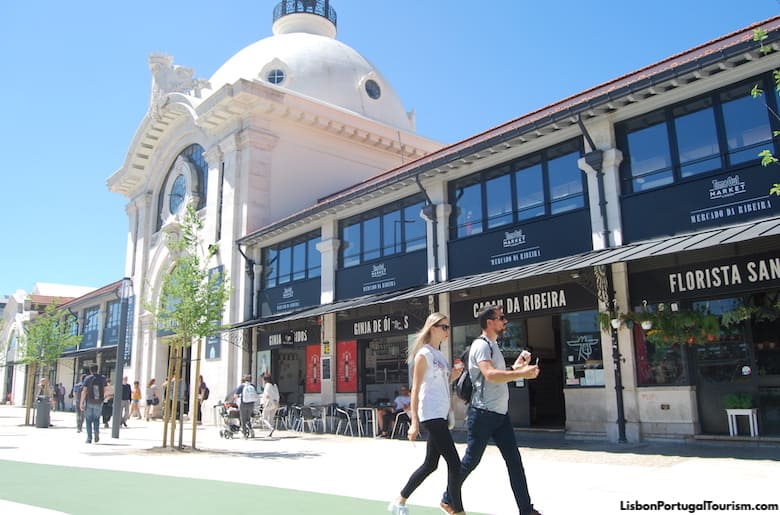
Mercado da Ribeira, Lisbon's main food market
Rua Nova do Carvalho, behind the market, was once known as the city's "red light district," with bars named after northern European capitals to attract their sailors who stepped off the boats nearby. Today it’s known as “Pink Street” for the color of its pavement, and is lined with hip bars and clubs, which host a street party seven nights a week.
What to See and Do in Cais do Sodré
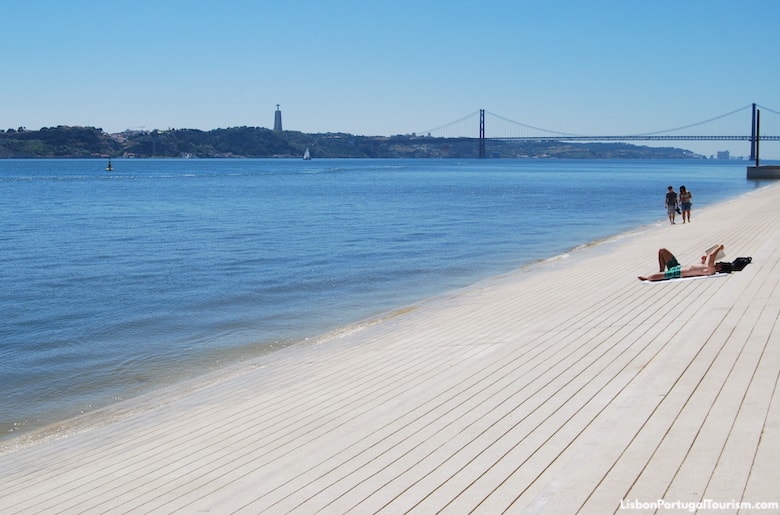
This promenade turns into an “urban beach” in the summer, with people stripping to their bathing suits and sunbathing on the steps that descend towards the water. It has a kiosk with a terrace, where drinks are served to those who prefer to sit in the sun and admire the views.
See the Ribeira das Naus Visitor's Guide.
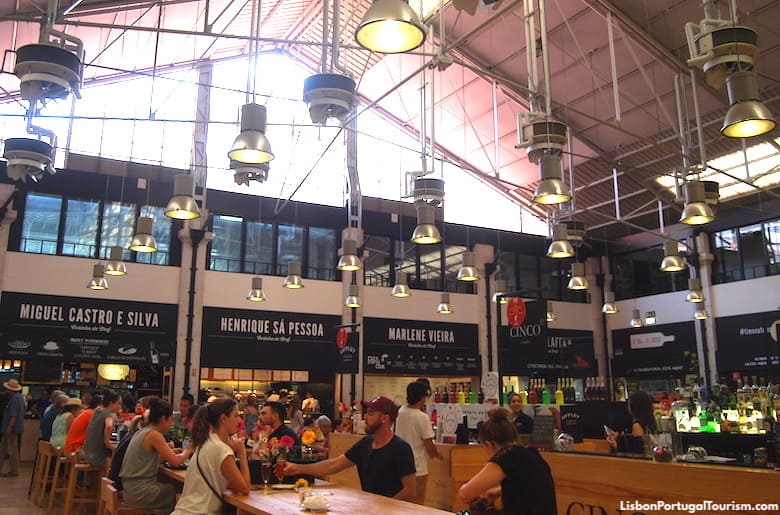
Mercado da Ribeira has been Lisbon’s main food market since 1892. In 2014, it also became known as “Time Out Market,” for the food hall curated by Time Out magazine. Its stalls offer the creative foods of many of the city’s top chefs and the best gourmet shops under one roof (or, in this case, under a large oriental-style dome). The canteen-style communal tables are taken over by locals and tourists throughout the day, from 10am to midnight (to 2am from Thursday to Saturday).
In a separate room of the iron interior are the traditional stalls, selling fresh fish and produce early in the morning, until 2pm.
See the Mercado da Ribeira Visitor's Guide.
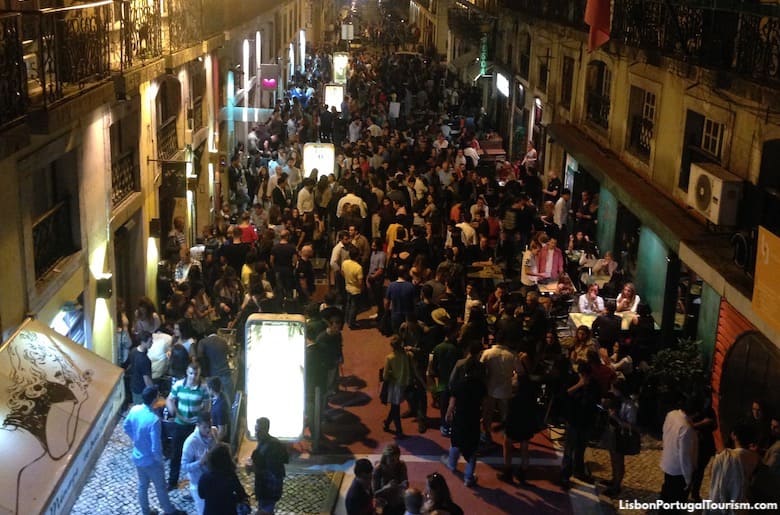
Pink Street was the name given to Rua Nova do Carvalho, when it was pedestrianized and its pavement painted pink in 2013. It’s now Lisbon’s most popular street at night, with several clubs and bars, most of them with tables outside. It’s quite small, but this former lane of “streetwalkers and sailors” has even made the New York Times’ list of 12 favorite streets in Europe, thanks to its street party atmosphere.
See the Pink Street Visitor's Guide.
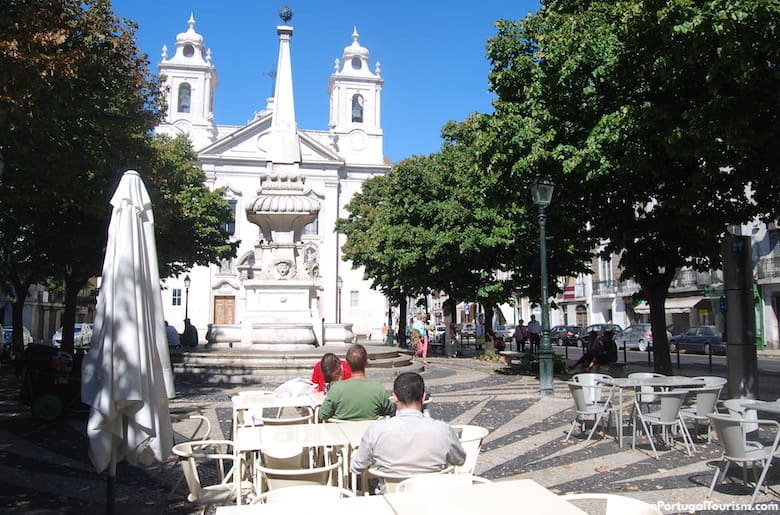
São Paulo Square and its church of the same name were built after the 1755 earthquake, and both are perfect examples of the Pombaline style. The original church from 1566 was destroyed in the earthquake, and the new one was partly inspired by Mafra Palace, with a baroque interior. It’s lined with white, blue and pink stone, and features a monumental painting on the ceiling depicting the Apotheosis of St. Paul. The ceiling of the chancel also has a beautiful stucco decoration by Giovanni Grossi, Lisbon's great baroque plasterer in the 18th century. Another prominent artist of the time, Pedro Alexandrino de Carvalho, contributed with the paintings of the side chapels.
At the center of the square, which is covered with the traditional Portuguese cobblestone pavement, is a drinking fountain from 1848, shaped like an obelisk topped by an iron armillary sphere.
The square is an epicenter of the city's nightlife, with outdoor seating, a traditional kiosk, and several bars nearby.
How to Get to Cais do Sodré
Cais do Sodré can be reached by metro. A station of the same name is the final stop of the green line. Trams 15 and 25, both departing from Praça da Figueira, also stop in the neighborhood.
You may ride the metro and the trams, as well as the city's buses, funiculars and trains for free with the Lisboa Card.
Where to Stay in Cais do Sodré
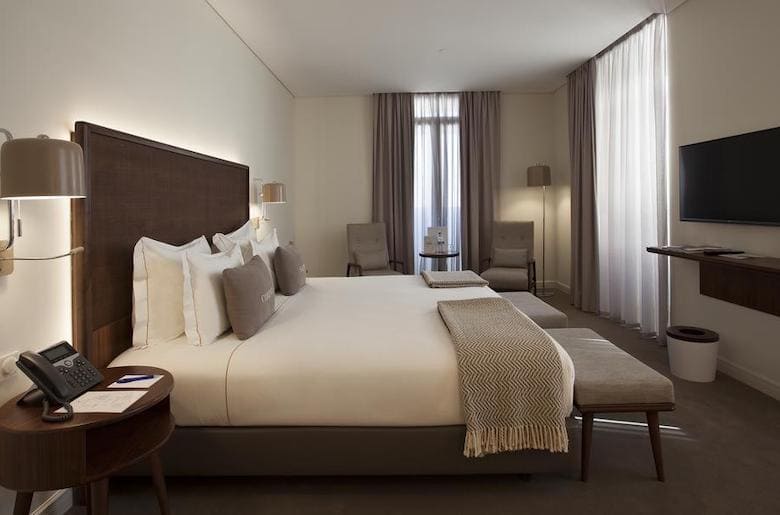
Located just steps from the waterfront, facing the Ribeira das Naus promenade and down the street from Comércio Square, this 5-star hotel has 79 rooms of different sizes and a restaurant spread over five floors. It mixes the historical and the modern, with a contemporary décor featuring some traditional details such as antique tiles. It also has a small museum showing artifacts found during the building’s renovation, which includes part of the city’s 14th-century wall.
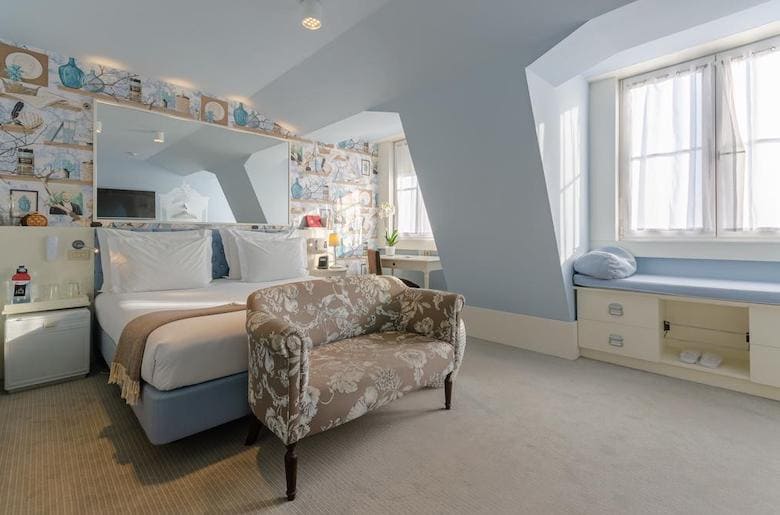
With five floors and five different themes, this charismatic hotel inspires any traveler. The rooms' décor remembers the city's poets, music, and historic neighborhoods, while the location allows guests to explore the best of Lisbon (bars, restaurants and shops) within walking distance. It also has a trendy restaurant, popular with locals.

Located inside Cais do Sodré Station, this hostel is for those looking to spend days in the sun and nights on the streets. The trains to the beaches of Cascais depart from this station, while the bars of Cais do Sodré are just a short walk across the road. The sun can also be enjoyed without stepping outside the door, on the rooftop terrace with pool.

